CHAMPIONSHIP LOCATION, DRAWS, AND SCHEDULE
For the third time in a row, the championship will be hosted by Mexico, this time in Ciudad Juárez, between June 2 and June 8. As usual, the four top teams will qualify for the FIBA U17 World Cup next summer.
Canada’s initial group includes Venezuela, Brazil, and Puerto Rico. The other group includes the US, hosts Mexico, the DR, and Argentina. So, as always, it’s important for Canada to perform well in the group stage to avoid one of the stronger options in the QF, which is the key game for guaranteeing a spot in the U17 WC next year (and hopefully to also avoid the US in the semis).
Canada will play three back-to-back games in the preliminary group stage against Venezuela (June 2), Brazil (June 3), and Puerto Rico (June 4). Then there’s a one-day break before the quarterfinals (#1 against #4 from the other group; #2 against #3), the semis, and the final on June 6th, 7th and 8th respectively. Altogether, 6 games in 7 days. All games are streamed on the championship website:
https://www.fiba.basketball/en/events/fiba-u16-americup-2025
A BIT OF HISTORY
This will be the 9th tournament in the bi-annual edition of the U16 FIBA Americas. Canada has won silver or bronze in all 8 previous tournaments but never won the gold. In the first three championships we saw some strong individual performances (Pangos in 2009; Murray in 2013), but were unable to translate it into team success, losing to Argentina and to Puerto Rico in the group stages, which led to inevitable meetings with the US in the semis.
The 2015 cadet team for the FIBA Americas championship was one of the most talented youth teams in Canadian history. It included RJ Barret, Andrew Nembhard (both a year younger), Simi Shittu, and Iggy Brazdeikis, as well as Marcus Carr, Noah Kirkwood, and Jaelin Llewellyn. That team easily won its first five games by an average margin of about 40 points. Then, in the gold-medal game, it stunned the US team (Wendell Carter Jr., Kevin Knox, Tre Jones, Gary Trent, and Markus Howard) by jumping to an early 19:3 lead at the end of the first quarter and continuing to lead up to the end of the third quarter. Eventually, the US size and mainly its depth were too much in the fourth and the Americans finished with the gold.
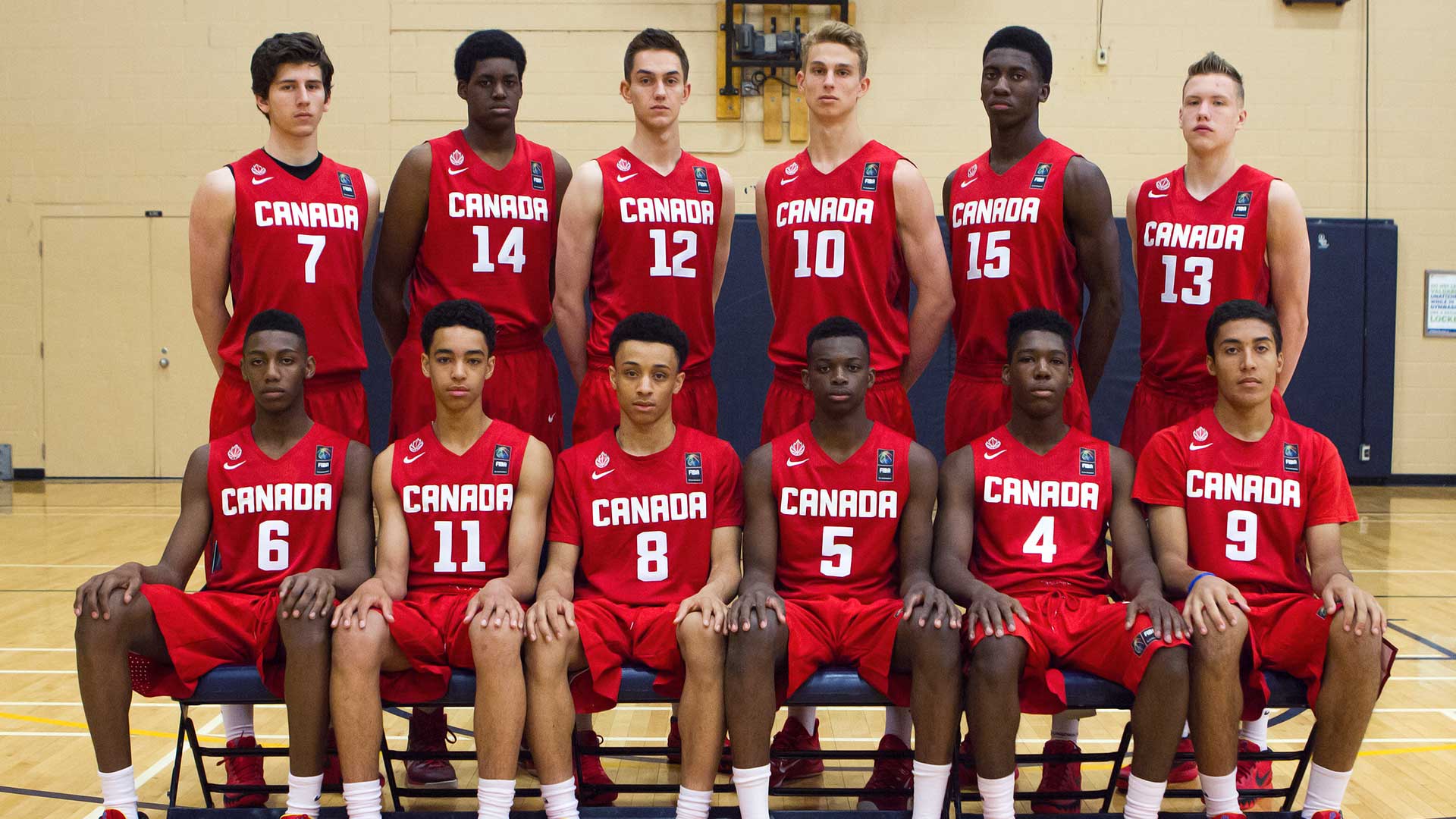
After putting up a weak team in 2017 (which nevertheless managed to capture the silver medal), in 2019, we again had a strong team, led by Ryan Nembhard, Shaedon Sharpe, Caleb Houstan, and Enoch Boakye, with Leonard Miller also on the team, though in a minor role. Houstan (23ppg) and Nembhard (14ppg and 9apg) played especially well, though Sharpe looked like the most promising long-term prospect and showed glimpses into his talent. It was enough to win all the games up to the final by a comfortable margin. The final was also competitive, but like in 2015, the Americans, although not more talented, were just bigger, more athletic, and deeper.

The 2021 team was again unremarkable, but in 2023 we had some nice talent, led by the young forwards Paul Osaruyi and Godson Okokoh, together with PG Kamai Samuels. That team had its challenges (mainly in terms of shooting and playmaking) and, per usual, started slow, hardly beating the DR in the first game. But it got better as the tournament continued, especially Osaruyi, who showed he’s a special talent. The final against the US was an unpleasant affair though. The Americans brought a big, athletic, and very talented team (probably the most talented I’ve ever seen at this level), led by the likes of Darryn Patterson, Cam Boozer, AJ Dybantsa, Tyran Stokes, and Jayden Quaintance, all projected lottery picks in next year’s draft (including the top three picks). They pressed full court most of the game and the Canadians were stunned and lost their head, often unable to pass mid-court. Canada finished the game with only 36 points (13 in the second half), and lost by a record margin of 82 points.
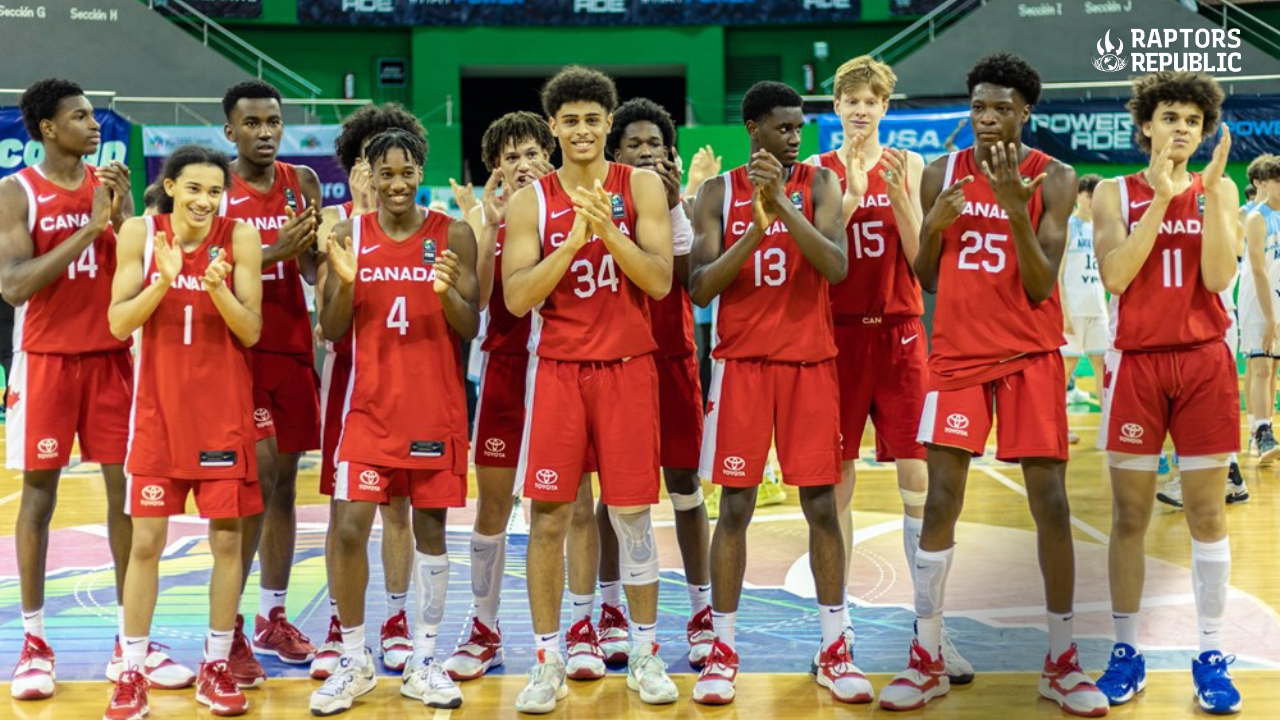
WHAT ARE WE GETTING IN 2025?
It’s always hard to be sure at such an early stage, as players are so young and haven’t been tested internationally. Nevertheless, I’m optimistic this time around and think it’s going to be one of the best and most talented teams we put up at the U16s.
Beyond the overall talent level of the 2009 birth cohort (more on that below), it’s also nice to see that most of the top talent has showed up to the competition. In 2023, the team was missing most of the top talents in the class of 2026 (including guys like Miles Sadler, Promis Nlandu, Dionycius Bakare, and Rokiem Green). I’m not sure having at least some of them would have made a huge difference against the US, but it did make the games against some of the South American teams competitive and uncomfortably close.
This time around, at least from what I’ve seen over the last two years, the team is not missing many clear top talents. The only exception is perhaps SF Tito Onyemachi, who (I’m not sure why, maybe injury?) was not even invited to training camp. The only other top-10 talent on my virtual list who’s not here is PG Kingston Montague, who was actually in the initial assessment camp, so maybe he just didn’t impress enough. At any rate, given the depth and talent at the PG position, I don’t think he’ll be missed.
Shooting may again turn out to be an issue. The 2023 Canadian team shot just 25% from 3 and 52% from the line and shooting at this age group has traditionally been lacking (it’s often a similar story for the Americans). The best shooter on this team from what I’ve seen is Noah D’acre, with the PGs (Mitakaro, St. Louis, Idbihi, and Badejo) and some of the wings (Wolker, Kapuanya) also all able to shoot the ball, although I’m not sure as consistently. Hopefully, against most teams this is not going to be a deciding factor, as I expect this team to dominate the paint and overwhelm opponents on defense with a mix of size, talent, and athleticism.
This is also a relatively young team, with only 4 players on the roster having already turned 16 and the leading big man being only fourteen and a half. But there’s quite a bit of talent here, including guys that I enjoyed watching last summer in the Canadian nationals and then throughout the year with their high school teams. So hopefully the age factor would not be too pronounced.
As I said, I think the level of talent is the best since the 2019 team and there may be a few future leaguers on this roster. Hopefully, that also leads to good team play, especially once they had some time to gel and get over the jitters.
THE ROSTER
GUARDS
Liam Mitakaro | 16.2yo PG, 6'4 | Edmonton, AB.
Mitakaro was the best player at the Canadian nationals last summer and almost led Team Alebrta to an upset against a very good Team Ontario. I think he might be the most talented guard on this team and generally one of the most promising players on the roster, with a bright future. A very good athlete with an impressive first step and a tight handle, Mitakaro excels at getting into the paint and bending defenses, and finishing well around the rim (including above it) with both hands. He has great footwork and already able to use deception very well. He’s also excellent at creating for both himself and his teammates and I was really impressed with his passing chops, vision, and composure. As might be expected at this age, he can be turnover prone, but I think he’ll figure that out with time. While I wouldn’t say he’s a great shooter right now, he definitely shoots the ball with confidence and reasonable accuracy, including step-backs and tough pull-ups. Also has an advanced mid-range game for this age, with good use of his body to bump defenders and take SGA-like step-back and turnaround jumpers. Finally, I was also impressed with the defense. He has active quick hands and good instincts, which make him a menace at that end, often able to strip opponents, and he’s also a good defensive rebounder. All in all, I’m a believer in his long-term potential and curious to see how he does on the international stage. It's still early, but he might become the most talented player to ever come out of Alberta.

Praise Badejo | 15.2yo PG, 6'1 | Tottenham, ON.
Given that he just turned 15, Badejo will probably come off the bench and start the tournament lower on the hierarchy than Mitakaro and Kenyon St. Louis (and maybe even Idbihi). But in terms of talent, I think he’s one of the more promising players on this team. An excellent athlete, who can play above the rim despite his limited stature, the Nigerian-born Badejo is a natural scorer with a mature body and game. Great first step, gets to the paint with ease, and scores from all 3 levels, with a strong base and nice pull-up 3s, mid-range jumpers, and finishing around the rim. He’s also a pesky defender, who plays hard and leaves it all on the court. Right now, he’s a better scorer than a playmaker, but he’s a willing passer and I think with time he’ll become a more well-rounded PG.

Kenyon St. Louis | 15.6yo PG, 6'2 | Toronto, ON.
St. Louis was marked from an early age as one of the most gifted players in this class. And while I think others might have better natural gifts, he’s certainly an excellent PG, mature beyond his years, with plenty of experience playing against older competition. A very crafty guard with good scoring instincts, creative finishing around the rim, and a nice floater game. I also like his visions and passing. He has a very nice shooting stroke, though in many of the games I’ve watched his shooting was off. Looks like there's still plenty of room for him to grow physically. But I expect he’ll be one of the leaders of this team, with possibly a role similar to the Nembhard brothers when they played with the Canadian U16 teams.

Malik Idbihi | 16.0yo PG, 6'4 | Bonn, Germany.
The mystery men (for me at least) on this team. Idbihi lives and plays in Germany and I have yet to see him play at all (there’s also very little footage of him online). I know that the German national team also expressed interest, but he chose to come play with Canada and made the roster despite quite a bit of strong competition. Hopefully, this means a long-term win for Team Canada but I have no idea how good he actually is and where he’ll end up on this team’s rotation.

Noah D'acre | 16.2yo SG, 6'4 | Mississauga, ON.
Probably the best shooter on this team (again, I’m not familiar enough with Idbihi to tell). Like Idbihi and Badejo, D’acre also has some international roots. He was born in China and also holds an Australian citizenship. A pure shooting guard, who can really hit it from beyond the arc, with a natural looking, quick, and compact release and great touch. Can hit set C&S shots, but is also a good movement shooter off the screen. He’s also not limited to C&S 3s and can also create off the dribble. Beyond the shooting, he’s also a nice and strong athlete, able to play above the rim and playing with an aggressive mindset, fighting for the offensive boards and going after it on both ends. Seems like he’ll be the leading shooting guard for this team, and I expect he’ll be on the starting 5.

WINGS
Isaiah Hamilton | 15.6yo SF, 6'6 | Oakville, ON.
For me, Hamilton is probably the most talented and promising player on this team (though we’ll need to see how Gohier continues to develop). Hamilton has elite effortless athleticism, combined with size, length and a big body. He’s guaranteed to put on some highlight dunks that will draw the attention of scouts. But he’s not just a high-flyer. The skill level is also quite nice for his age, the development of his perimeter shooting looks promising, and he’s also showing glimpses of vision and feel for the game. The game just seems to come easy for him. His game is still a bit less mature than that of some of the older players (who are also older) on the team, and it needs more work around the edges. He doesn’t always dominate the way his talent and athleticism might suggest he could, which reminds me a bit of Shaedon Sharpe at the same age (in 2019 with the Canadian U16). Regardless, the talent is tantalizing.

Isaiah Clarke | 15.8yo SF, 6'8, | Mississauga, ON.
Clarke is actually listed as a PF in the FIBA competition webpage, but I think he has the skill to play both forward positions (although he’ll probably play more as a big in this competition). A good athlete with a strong body, he’s a menace in the transition offense, but can also shoot the ball (from what I’ve seen, he has a pretty good shooting touch) and plays hard-nosed defense. I think he’ll have a major role on this team and see a good among of minutes.
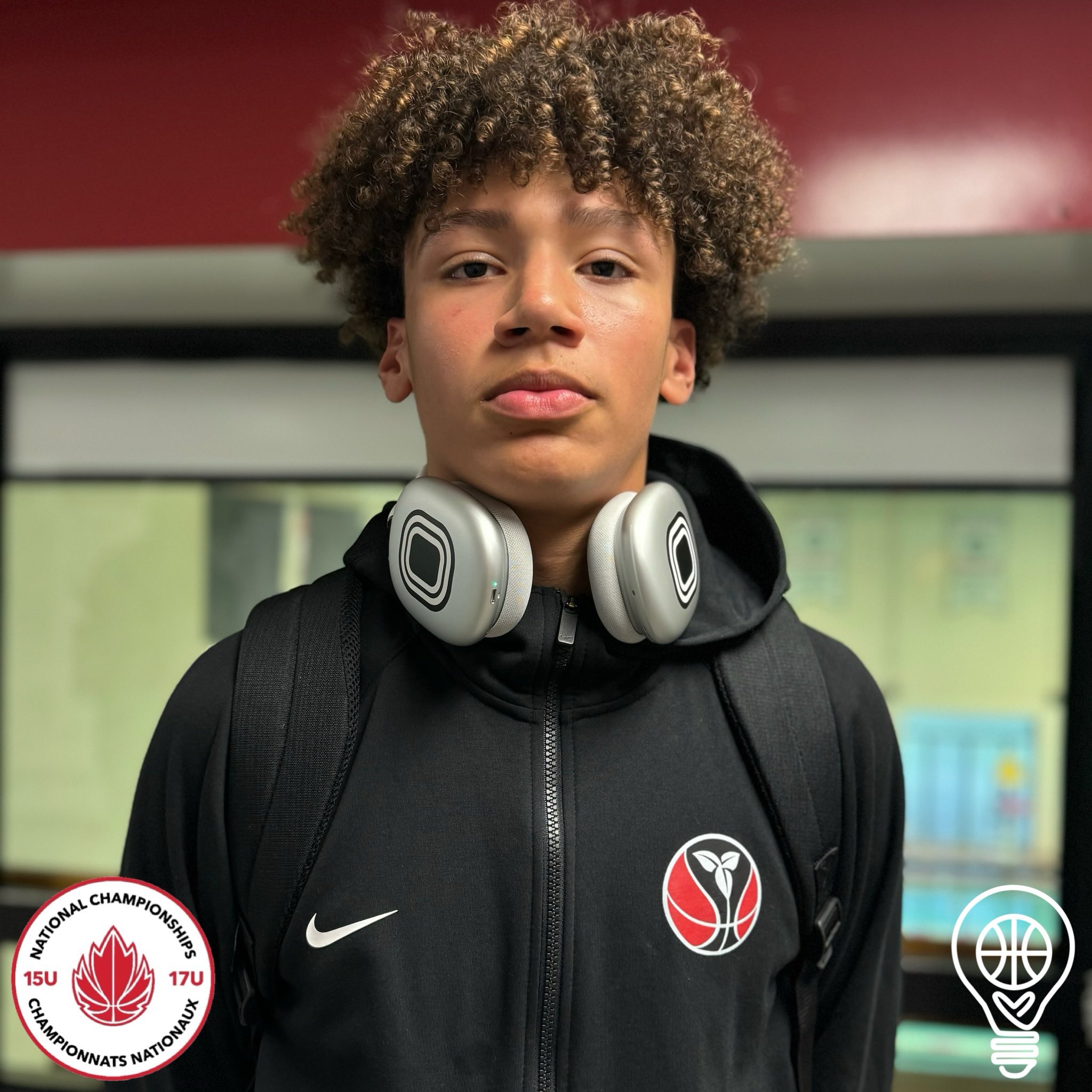
Jakob Wolker | 15.5yo SF, 6'8 | Hamilton, ON.
One of the younger players on this team (only Gohier and Badejo are younger), but also one of the more intriguing long-term prospects. A very good shooter for his size and age, with surprising mobility and skill. Also not afraid to get to the rim and finish with both hands, showing some nice skill and touch. Not sure he’ll be one of the leading players on this team, but I do think he’s a very interesting talent long term.
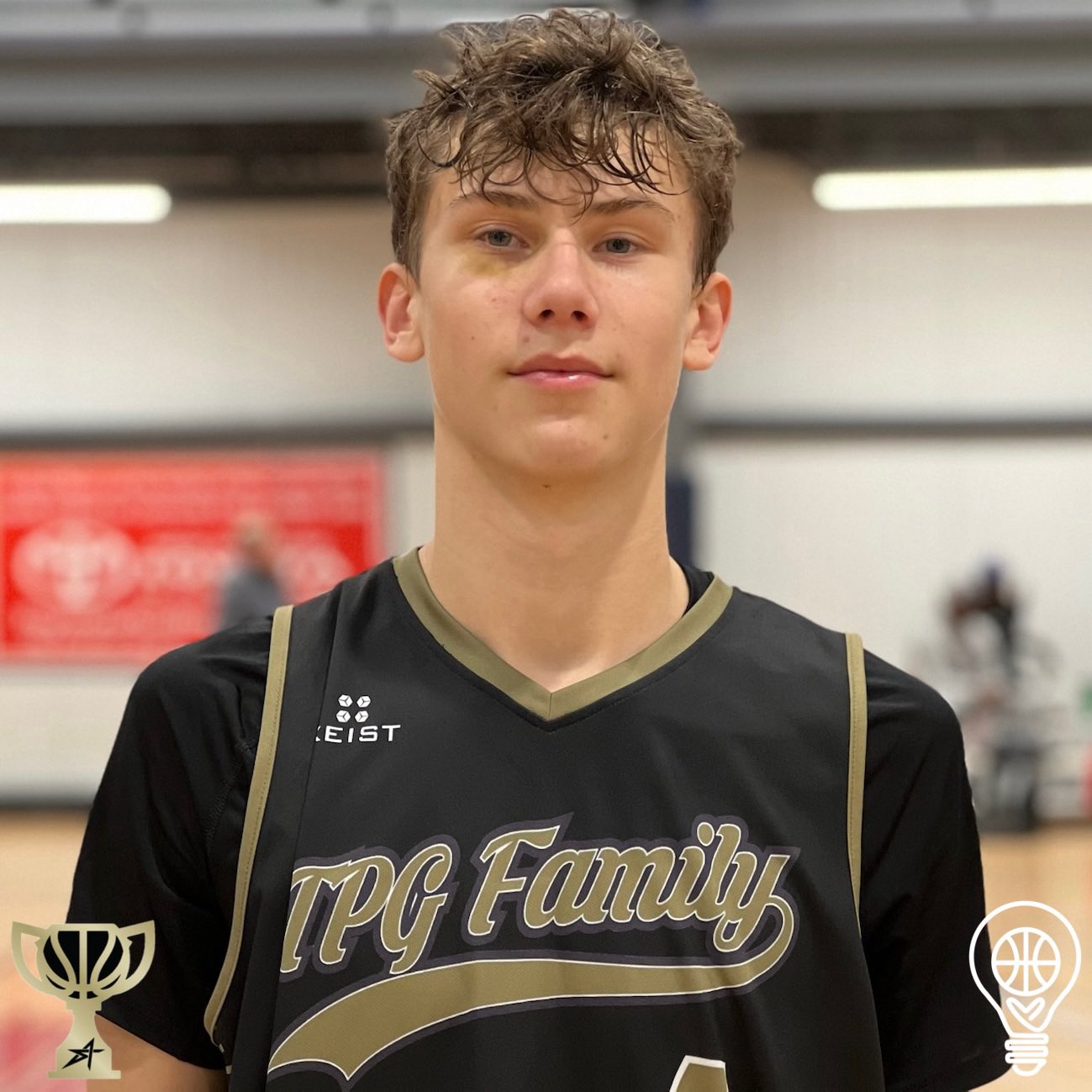
Grady Kapuanya | 15.9yo SF, 6'8 | Montreal, QC.
Similar to the other wings on this team, Kapuanya has very impressive physical tools with his size and length. And he has one of the nicest looking shooting stroke out of this bunch (shot the 3-ball nicely last summer at nationals, with 37%). Also has a nice handle for his size and when he’s on, he can contribute on both sides of the floor. Despite that, when I watched him play, he seemed to be a step behind in term of his development. He’s not the fastest guy and his burst is nice but not elite. It also seems like he needs more time to put things together. There are minutes where he flashes special talent, but other times he’ll blend into the background and his motor can be inconsistent. Still, with his size, mobility, skill, and shooting, he’s an intriguing prospect. And on a team lacking big men depth, I think he’ll share the paint duties with the other forwards and could have an important role.
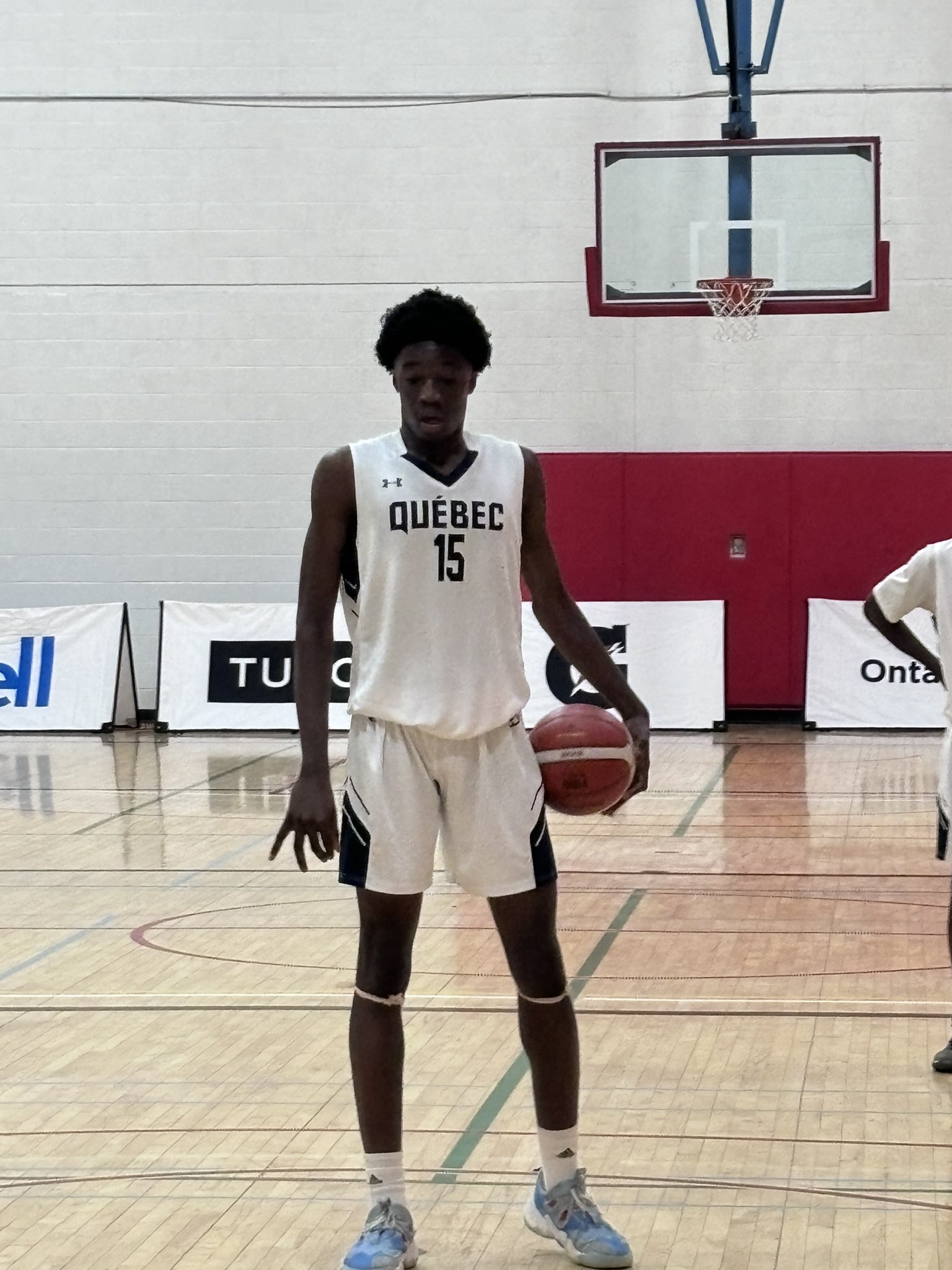
BIGS
Jordan Fisher | 16.1yo PF, 6'6 | Oshawa, ON.
Elijah’s younger brother hasn’t gotten nearly the same amount of attention as his older brother did during his high school days. But he’s a nice and talented player in his own right. You could argue that Jordan is actually more a wing at 6’6 (shorter than just about all the other wings on this team), with some perimeter skills and the ability to handle the ball. But I see him more as an undersized PF, who operates best in the paint with a wide body and a powerful aggressive playstyle. Jordan is a bulky high-energy big man, with very good mobility, footwork, touch around the rim, and rebounding skills. His shooting stroke from the mid-range and from the line is also quite nice, though he doesn’t really shoot the 3-ball. He also has some nice tricks in his bag, surprising opposing big men with his agility and change of pace, combined with the strength to finish with contact. Given his strength and maturity, he’ll likely play big minutes for this team, though I’m not sure the long-term ceiling is as high as that of some of the other players on this team.

Jeremy Gohier | 14.6yo C, 7'4 | Laval, QC.
Probably the most intriguing player on the Canadian roster. After Edey and Rioux, Canada (and QC) has found another giant. Four years ago, Rioux played at this competition as a 15.5yo 7’3 and it’s tempting to make the comparison, though Gohier is only 14.5. But they are very different kinds of prospects. With Rioux, it was obvious that the talent, coordination, and motor are limited (though he was still able to influence the game against the US just with his sheer size). Gohier has far superior talent, natural movement, athleticism, coordination, and processes the game much better. He’s also much more skilled, showing glimpses of mid-range shooting, ball handle, and even passing. Finally, he also seems more passionate about the game. In short, the talent here is very real. He’s not Wemby, but he might be the closest player we’ve seen to him with this kind of physical profile at this age.
With all that, I think we should temper our expectations. A 14-year-old big man playing almost two years up should not be expected to take over games. It would be nice to see him get some run time and a taste for the competition, so that hopefully he comes back next year for the U17 and is able to dominate. Gohier has all the time in the world and hopefully he stays injury free and able to fully tap into his talent. We’ll surely be talking about him in years to come.

Ranko Rascanin | 16.2yo C, 6'9 | AB.
Rascanin was part of Team Alberta last year in the Canadian nationals, but he didn’t play much, and I can’t say I was impressed with what he brought to the table in the minutes he got. He has a big body and he’s a decent rebounder but I’m not sure he brings much more. It’s possible he made a jump over the last year, as I haven’t watched him since last summer. But I expect he might be the odd man out on this team; a security big if the size is needed and Gohier can’t deliver or gets into foul trouble on a team that doesn’t have any other real bigs, or even a classic PF for that matter. I do suspect though that the more talented combo forwards (Clarke, Fisher, Wolker, and Kapuanya) will see most of the minutes in the frontcourt when games are tight.
BOTTOM LINE
As always, there are two primary baseline goals in this competition:
1. Identify potential future talents and get them into the national team system.
2. Secure a spot in the WC next year so we can continue to provide our young talents with international exposure.
Given the talent level on this team, reaching the second goal should not be hard and, as I said above, I’m happy to see most of the top talent in this cohort is on the roster.
So, with a projected high-level team, maybe we can start talking about the gold-medal game against the US, in the hopes that the team delivers and there’s no major upset on the way there. I’m also predicting for a much more competitive game than the 2023 83-point blowout.
Given the serious gaps in depth and size, we’ve never come actually close to winning against the Americans a this age group. But unlike the embarrassing performance two years ago, there have been years in which we were able to at least keep the game competitive and interesting (mainly in 2015 and 2019). I’m sure hoping for another such performance. Partly, it has to do with having a much more balanced team, with better playmaking, size, athleticism, talent, and maturity at the guard and wing positions. The 2023 Canadian team’s most talented players were bigs, who were also a year younger than the competition, and it showed.
The more optimistic outlook also has to do with a US team that doesn’t look as scary as the one they sent to this competition two years ago. That team was an aberration. It had a combination of very high-level talent, size, strength, and athleticism with an unusual maturity level of several key players and a highly competitive edge. I’m less familiar with the current group, but from the little I’ve seen and heard, it seems more in line with previous American teams at this age group – strong, talented, and deep, but not as decisively superior as the 2023 super team.
BEST OF LUCK TO THE BOYS!


















